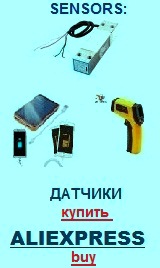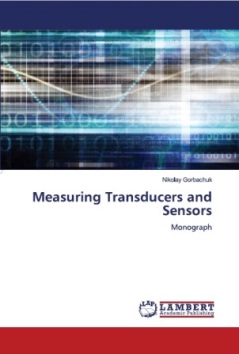Transducers, gauges, sensors - Information portal © 2011 - 2025 Use of material is possible by placing an active link
Photoelectric effect of the barrier layer
The physics photoelectric barrier layer (valve photoelectric effect). The mechanism by which the electromotive forces by light analyzed by the example of the copper oxide.
In the photoconductivity has been shown that under the action of light absorbed electrons can jump from the valence band to the free, thus creating the photoconductivity. In this case, there is only an additional semiconductor conductivity, but did not cause their own electromotive forces. But know another phenomenon - the emergence of the electromotive forces due to illumination of the semiconductor. For example, when subjected to a semiconductor non-uniform illumination, so that one part of the sample covered much stronger, while others are much weaker in some cases you can find some potential difference between the light and dark areas. This phenomenon is explained by the fact that at the time of lighting the electrons begin to diffuse out into the dark lit areas at a greater rate than in the opposite direction. Such preferred diffusion leads to the fact that the dark areas in the case of electronic conduction mechanism gradually become negatively charged, and the light - positive. As a consequence, within the semiconductor is formed gradually increasing electric field, which, in the end, an equilibrium state, characterized by the fact that the electron flows in both directions will be equal. When will the balance between light and dark areas of the semiconductor will be some difference of potential, which sometimes up to 0.2 V.
However, the most interesting manifestation of the effect of light on the semiconductor is the existence of the so-called photoelectric barrier layer.
Oxidize the copper plate to form their Su20 layer of copper oxide, which is a classic semiconductor. Applied to the surface of the copper oxide thin layer of metal, such as silver. It is known that very thin metal layers are transparent. Then make a simple circuit. To sum up the translucent silver electrode wire from one terminal galvanometer second terminal which is connected to a copper plate. This scheme is characterized by the fact that there is no power supply. If you send to the upper stream of translucent silver electrode Council, the galvanometer needle will go far to the right from its zero position, as the current in the circuit goes. This phenomenon is due to the existence in the metal - semiconductor barrier layer.
In this case, the electrons move in response to light of cuprous oxide through the barrier layer in copper. Consequently, the copper plate is negatively charged, and the translucent electrode positive. Thus, exposure to light in the cuprous oxide surface causes the appearance of a chain of electrical current. A similar phenomenon is observed in other semiconductors. Vividly this effect in systems incorporating semiconductors such as sulfur thallium sulfide silver, selenium, germanium, silicon, cadmium sulfide.
The phenomenon of the electromotive force or electric current when exposed to light in systems composed of electrons and the 'hole' of semiconductors, the barrier layer and the metal electrode, is called the photoelectric effect of the barrier layer or valve photoelectric effect.
What is the nature of the photoelectric effect valve? Mechanism is composed of several stages. The first step is that the absorption of light in a semiconductor frees both electrons and holes, forming a so-called pair "electron-hole." Exemption pairs reduces to the fact that the electrons from the valence band are moved into a free zone, becoming thus the conduction electrons and the holes are filled in the area and are also able to participate in the electrical conductivity.
If the light is absorbed in any one semiconductor is not in contact with other semiconductors, caused by light only couples would increase the conductivity of the semiconductor and this would be the thing ended. Quite different in the case we are considering a system consisting of semiconductors with electronic conductivity (denoted by the letter n) and p-type conductivity (denoted by the letter p). Concluded between the two semiconductors barrier layer. Contact p and n semiconductors leads to the formation of contact between the electric field. And if the work function of the 'hole' over the semiconductor work function, which is mandatory for two semiconductors of the same chemical composition, it is the contact electric field is directed from the n-type semiconductor to the "hole." What happens in this case with couples? Obviously, the "liberated" the light of minority carriers, ie, electrons in p-type semiconductor, or a hole in the electron, due to this field will be in the barrier layer of the semiconductor switch from one to the other. As the transition of minority carriers from one semiconductor to another will increase their accumulation in one part of the system, while the other side will be the accumulation of the major carriers. Thus, the pair formed by the light will be separated: the electrons are concentrated in the n-type semiconductor, and holes - in the hole. This accumulation can not continue indefinitely, because in parallel with the increase of the concentration of holes in the "p-type" semiconductor and electrons - in electronic grows they create an electric field which prevents the transfer of minority carriers in a semiconductor barrier layer in the other semi. However, with the increasing of the field increases and the reverse flow of minority photocarriers. Eventually, there will come a dynamic equilibrium, where the number of minority carriers moving per unit time through the barrier layer, equal to the number of those same carriers moving over the same period of time in the opposite direction. At this point, between the upper and lower electrodes to set some final potential difference which in substance and will be a photo electric driving force.
Speaking on the establishment of such a dynamic equilibrium, it should be borne in mind that the number of minority photocarriers N moving per unit time of the illuminated semiconductor through the barrier layer in the other semi, depends on the intensity of light output. As the light intensity increases the numerical value of N. First, this increase is linearly, and then starts to increase N more and more to keep up with increasing light intensity as long as there is complete saturation. In accordance with the change of N depending on changes in light output changes and the magnitude of the photo electric driving force, which, in the end, and this phenomenon is the main concern.
Such, in general terms the mechanism of photo electric driving force in the system consisting of the p and n semiconductors and concluded between the barrier layer.
Valve photoelectric effect occurs particularly active in semiconductor systems with a high diffusion length "non-core" carriers and thus a great time in their lives.
From a consideration of the mechanism of gate photo electric motive power is seen that the electrode in direct contact with the electronic semiconductor, always negatively charged, while the electrode is in direct contact with hole semiconductor, is positively charged. Therefore, different types of valve PV upper translucent electrode can acquire a positive charge or a negative.
Opening photoelectric barrier layer increased the possibility of the practical use of semiconductor and formed the basis of the device gate photocells - devices, direct and immediate way convert radiant energy into electrical energy.
M.S.Sominsky. Semiconductors. (Photo effect of the barrier layer).
русский / english
Home >> Photo effects, light >> Photoelectric effect of the barrier layer
Photoconductivity
Photoeffect of plug-forming layer
Solar battery
Selenium photocells
Selenium fotoresistance
Bolometrs
Photo effects, light
• Information about various converters and sensors of physical quantities, parameters of various physical processes is presented.
• Electrophysical properties and effects in various electrical materials.
• Theory, experimental results, practical application

See also:
CONVERTERS, GAUGES, SENSORS
Information, news, advertising


